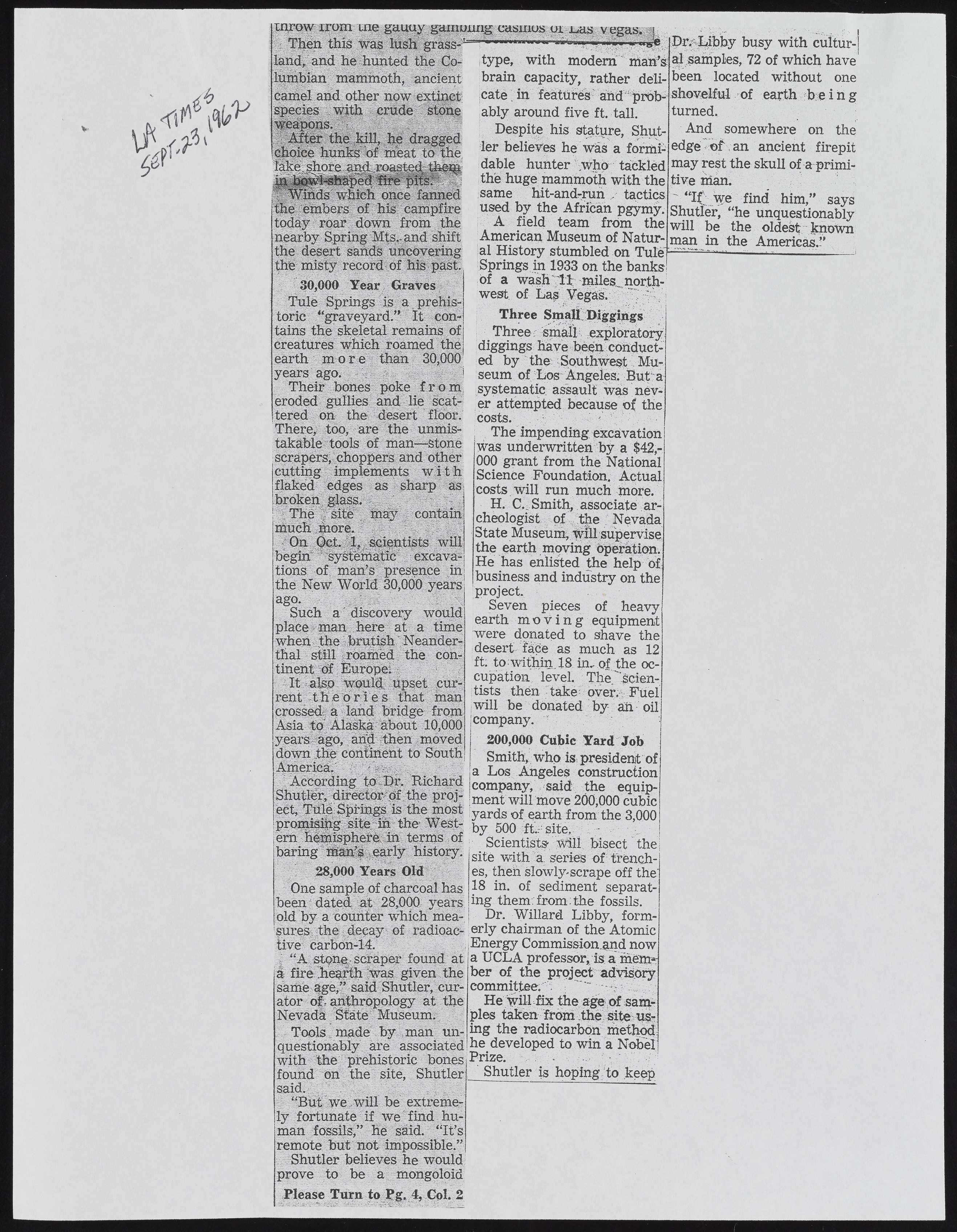Copyright & Fair-use Agreement
UNLV Special Collections provides copies of materials to facilitate private study, scholarship, or research. Material not in the public domain may be used according to fair use of copyrighted materials as defined by copyright law. Please cite us.
Please note that UNLV may not own the copyright to these materials and cannot provide permission to publish or distribute materials when UNLV is not the copyright holder. The user is solely responsible for determining the copyright status of materials and obtaining permission to use material from the copyright holder and for determining whether any permissions relating to any other rights are necessary for the intended use, and for obtaining all required permissions beyond that allowed by fair use.
Read more about our reproduction and use policy.
I agree.Information
Digital ID
Permalink
Details
More Info
Rights
Digital Provenance
Publisher
Transcription
luxpbiam mammoth, ancient :-f-' i h m m k P$ pifii i if li cas&el and other now extjaet W M ^ faKe£Jiorejtffifci< toddy roardow m from the nearby Spring M ^ and shift thfl'iffli^lra^plft^f £ * 30,000 ^Year ;0raV es|;y Tule Springs .is a,prehistoric “graveyard.” ; It Contains the skeletal remains of creatures which roamed the earth m o r ey than y 30,000 Their bones poke f r o n a eroded' gullies, and lie ]scattered on the desert floor. There/ too, are the unmistakable tools of man-—stone scrapers,^choppers, and other cutting 1 implements ; § || t m flaked' ledges |a s t ^haipff'as tyill tions^of, man’s presence m the New World 30,000 years ago. ; 1 ig lg j<. h /- 1) f4:;; Such a discovery would p lacem an here; at a time when ^the ^bruti^h 'Neanderthal I still .roamed 1 the continent of Europe!' | ^ §T 11B <* |I t -also would upset current t l i e p r i e s^that man crossed* a land bridge from Asia to Alaska about 10,000 yearsiAgo, l aifdthen^m oved down th e coritiheht to South Ifceridad in^ow rrom tne. gauu^ -casmcjaBMagg \regp%# kndy apd h a u n te d type, with modern maxi’s brain capacity c a te , ih ^ fe ^ u f^ ^ d ^ r b b - ably around five ft. tall. Despite his stature, Shutler believes he was a formidable hu&ter^yftbw; tackled the huge mammoth with the same hit-andrrun ,- tactics used by the African pgymy. A field team from the American Museum of Natural History stumbled on Tule Springs in 1933 on the banks of a west, of Las Vegas.|S§|f|yV' Three Three small exploratory diggings have been cohduct-ed by the Southwestf Museum of Los Angeles. But a systematic assault was never attempted because of the costs. . . | : The impending excavation was underwritten by a $42,- 000 grant from the National Science Foundation. Actual costs will run much more. H. C.: Smith, associate archeologist of y&e Nevada State Museum, lim ^ p erv ise the earth moving bperktion. He has enlisted the help of business and industry on the project. Seven pieces of heavy earth m o v i n g equipment were donated to shave the desert fade as much as 12 ft. to within. 18 in. of the occupation level. The’"scientists then take I over. Fuel will be donated by ah oil Company. 200,000 Cubic Yard Job Smith; w h q is presidemtof a Los Angeles construction Richard company, said the equip- ShUtter, director^of proj- jment will move 200,000 cubic yards of earth from the 3,000 i g f f l 500 fL site - I- • ' S l i Scientists* baring ^ a h ^ f ^ r ly history. vdll bisect the 1 28 ,0 0 0 Y e a r s O l d | | One sample of charcoal has been dated a t 28,000 years old by a counter which mea site with a. series of trenches, then slow ly scrape off the 18 in. of sediment separating them from:the fossils. Dr. Willard Libby, form chairman of the Atomic tive: carbon-14. Energy Commission.and now UCLA professor, is a mem* a fire .hearth was given the same age” said Shutler, curator of , anthropology at the Nevada Ufate Museum; , , * ^V‘ S ~ ? V f „ - r ' tpk “ * Ssl ' ' ? Tools;made b y m a n unquestionably are associated with the prehistoric bones Prize. ber of the proj ect advisory committee, ; | 3 f He will fix the of samples taken from the site us* ing the radiocarbon method he developed to win a Nobel found on the site, Shutler said. . ‘ ^ I ^ 1 1 , : y “B ui we will be extremely fortunate if we find human fossils,” he said. “It’s remote but not impossible.” Shutler believes he would prove to be a mongoloid Please Turn to Pg* 4, Col. 2 Shutler is hoping to keep Dry|j&iby busy with cultural samples, 72 of which have been located without one a h o ^ fu l of earth b e in g turned. And somewhere on the edge o f an ancient firepit may rest the skull of a primitive xrian. ' “I£y we find him,” says Shutler, “he unquestionably will be the oldest known man in the Americas,”

